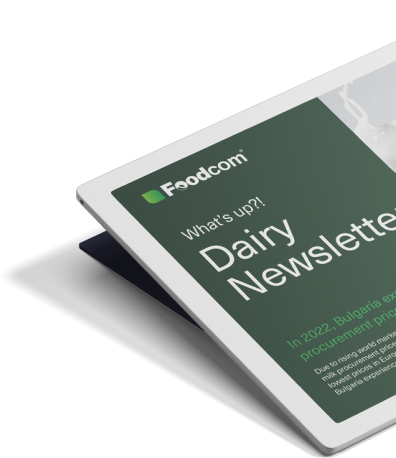Commodity hedging – what is it?
Commodity hedging is a strategy for managing price risk in commodity trading, involving the conclusion of contracts or financial instruments (e.g., futures, options, forwards) that are intended to secure the purchase or sale price of a commodity in the future. This protects the company from unfavorable changes in market prices of raw materials such as milk powder, protein concentrates, milk fats, and other food raw materials, which is particularly important for trading houses.
Why is this important?
It ensures greater cost stability: it allows the company to predict the level of expenditure on raw materials, regardless of market volatility.
Commodity hedging allows trading companies to maintain control over the costs of purchasing or selling raw materials, regardless of their current fluctuations on the global market. By entering into forward contracts or options, a company can set the price of a raw material, such as powdered milk, vegetable oil, or protein concentrate, in advance. This limits the impact of seasonal supply changes, economic crises, or exchange rate fluctuations on current expenses.
It facilitates budget and margin planning in the trade of raw materials, food, and feed, which is crucial for companies such as Foodcom S.A.
By hedging raw material prices, companies can plan margins, operating costs, and sales prices more accurately. This reduces uncertainty when entering into long-term contracts and allows companies to maintain profitability even in unstable market conditions.
It reduces the risk of sudden price spikes that can affect the profitability of commercial contracts and the efficiency of the supply chain.
Commodity markets, especially for agricultural and dairy products, are particularly vulnerable to rapid price changes resulting from weather conditions, political decisions, the geopolitical situation, or changes in international trade. Hedging allows you to limit the effects of such fluctuations, protecting the profitability of transactions and the financial liquidity of the company.
It is part of a professional approach to managing the raw materials supply chain – from sourcing, through logistics, to sales – which is in line with the model of a globally operating company.
The inclusion of a hedging strategy in supply chain management demonstrates the financial and operational maturity of a company. Price hedging is a natural complement to logistics, inventory planning, and commercial risk management. In global organizations, hedging is part of a broader strategy to stabilize operations – from raw material procurement, through transport and storage, to sales and transaction financing.




